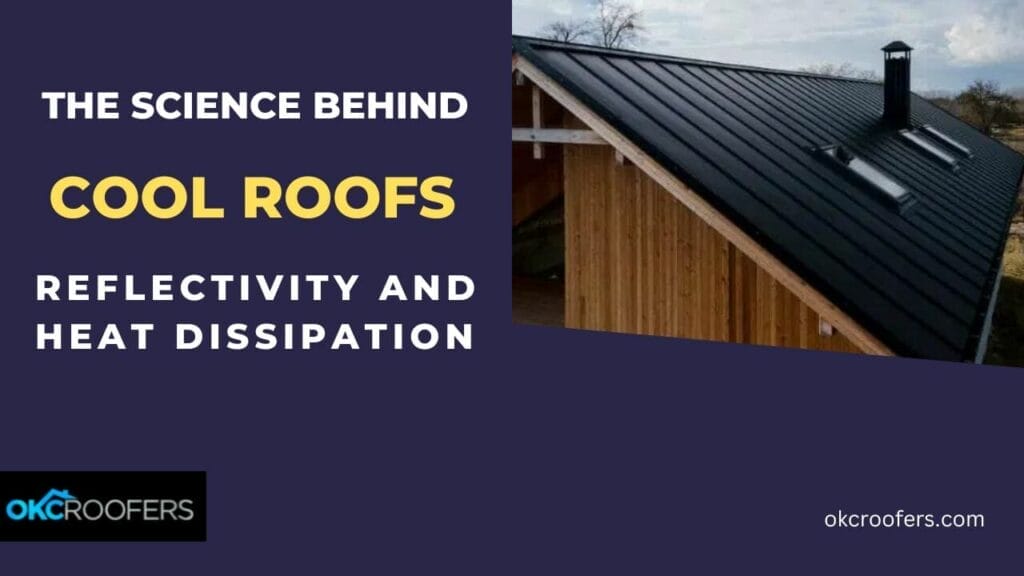In the quest for sustainable construction solutions, cool roofs have emerged as a powerful tool in the fight against urban heat islands (UHIs) and climate change. With their unique ability to reflect sunlight and efficiently dissipate heat, cool roofs have garnered significant attention for their potential to transform urban environments.
Reflectivity: The Key Mechanism
Solar Reflectance (Albedo): At the heart of the cool roof concept lies the principle of solar reflectance, commonly referred to as albedo. This metric quantifies the proportion of solar radiation a surface reflects into the atmosphere. Cool roofs leverage materials with high albedo to minimize solar absorption and reduce heat gain within buildings.
Role of Reflective Materials: The foundation of cool roofs lies in using reflective materials. White and light-colored roofing materials possess high solar reflectance, allowing them to bounce back a substantial portion of incoming solar radiation. Additionally, applying reflective coatings and paints to roofing surfaces enhances their ability to repel sunlight, contributing to a cooler indoor environment.
Benefits of High Reflectivity: The advantages of high reflectivity extend beyond temperature reduction. Cool roofs alleviate the strain on cooling systems by minimizing the amount of solar radiation absorbed, leading to remarkable energy savings. Furthermore, the extended lifespan of roofs due to reduced thermal stress adds to the economic feasibility of cool roof investments.
Heat Dissipation: Cooling the Built Environment
Heat Dissipation Mechanisms: Cool roofs employ radiative and convective cooling mechanisms to dissipate absorbed heat. Radiative cooling involves emitting the heat absorbed as infrared radiation, while convective cooling capitalizes on airflow to carry away heat effectively.
Comparison with Traditional Roofs: Conventional roofing materials, often dark in color, tend to absorb a significant portion of solar radiation, leading to increased indoor temperatures. The conductive heat transfer in these roofs exacerbates the issue, causing localized heat buildup and amplified energy consumption.
Scientific Principles Behind Cool Roofs
Solar Energy Spectrum: A fundamental grasp of the solar energy spectrum is vital to understanding cool roof behavior. This spectrum encompasses visible, infrared, and ultraviolet light, each contributing to solar radiation.
Interaction with Roofing Materials: Cool roofing materials are meticulously designed to interact optimally with incoming light. They absorb less energy, reflecting more incident sunlight and minimizing heat transfer to the building interior.
Role of Emissivity: Emissivity, the measure of a material’s ability to emit thermal radiation, plays a pivotal role in radiative cooling. Cool roofing materials possess higher emissivity, enabling them to efficiently release absorbed heat, particularly during the cooler nighttime hours.
Urban Heat Island Effect and Cool Roofs
Understanding Urban Heat Islands: Urban heat islands result from various factors, including heat-absorbing surfaces, reduced vegetation, and human activities. These elements culminate in significantly higher temperatures in urban areas than their rural counterparts.
Cool Roofs as a Mitigation Strategy: Real-world case studies conducted by OKC Roofers in Oklahoma City underscore the efficacy of cool roofs in combating the urban heat island effect. By implementing cool roofs, communities can effectively mitigate rising temperatures, leading to reduced energy demands for cooling and improved air quality.
Material Innovations and Cool Roofing
Ongoing Material Research: Research and development efforts continue to push the envelope in cool roofing technology. Advanced reflective coatings and innovative materials, including those integrating nanotechnology, are at the forefront of enhancing reflectivity and durability.
Environmental Considerations: A sustainable approach underpins cool roofing material innovation. Ensuring the enduring reflectivity of these materials over time is essential for their long-term effectiveness and eco-friendliness.
Cool Roofs: Real-World Applications and Success Stories
Residential Implementation: As exemplified by OKC Roofers’ initiatives in Oklahoma City, the residential sector showcases the successful integration of cool roofs. These installations improve energy efficiency and enhance the comfort and well-being of occupants.
Commercial and Industrial Applications: Cool roofs extend their benefits to commercial and industrial spaces, revolutionizing workplace conditions and offering substantial economic gains for businesses.
Challenges and Limitations
Climate-Dependent Effectiveness: The effectiveness of cool roofs varies across different climate zones, necessitating tailored solutions to account for diverse environmental conditions.
Aesthetic Concerns and Urban Planning: While the advantages of cool roofs are undeniable, their integration into urban landscapes must balance architectural aesthetics and sustainability objectives.
Maintenance Considerations: The consistent performance of cool roofs relies on regular cleaning and maintenance of their reflective surfaces to ensure optimal cooling efficiency.
Government Policies and Incentives
Support for Cool Roof Installations: Government incentives, including rebates and financial support, play a pivotal role in promoting the adoption of cool roofs and fostering sustainable building practices.
Integration into Building Codes: Incorporating cool roofing standards into building codes catalyzes their widespread implementation, ensuring long-term sustainability in construction.
Future Outlook and Conclusion
Cool roofs stand as a testament to human ingenuity in addressing climate challenges. As cities worldwide grapple with escalating temperatures, these roofs offer a pragmatic solution to counteract the urban heat island effect. With continuous research, material innovations, and heightened awareness, the horizon holds the promise of widespread cool roof adoption, contributing to energy efficiency and enhanced climate resilience. The call to action resonates across stakeholders to champion cool roofs and spearhead the transition to a more sustainable built environment, ensuring a cooler and greener future for future generations.








